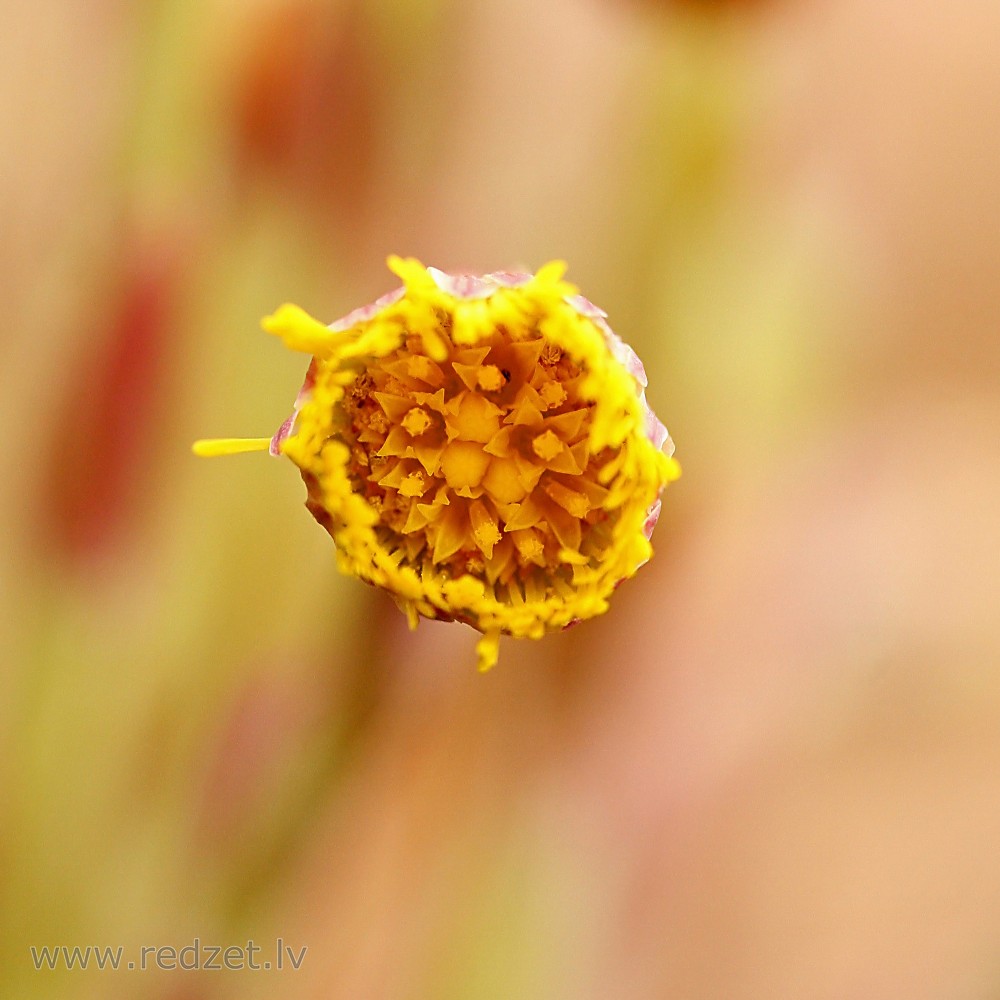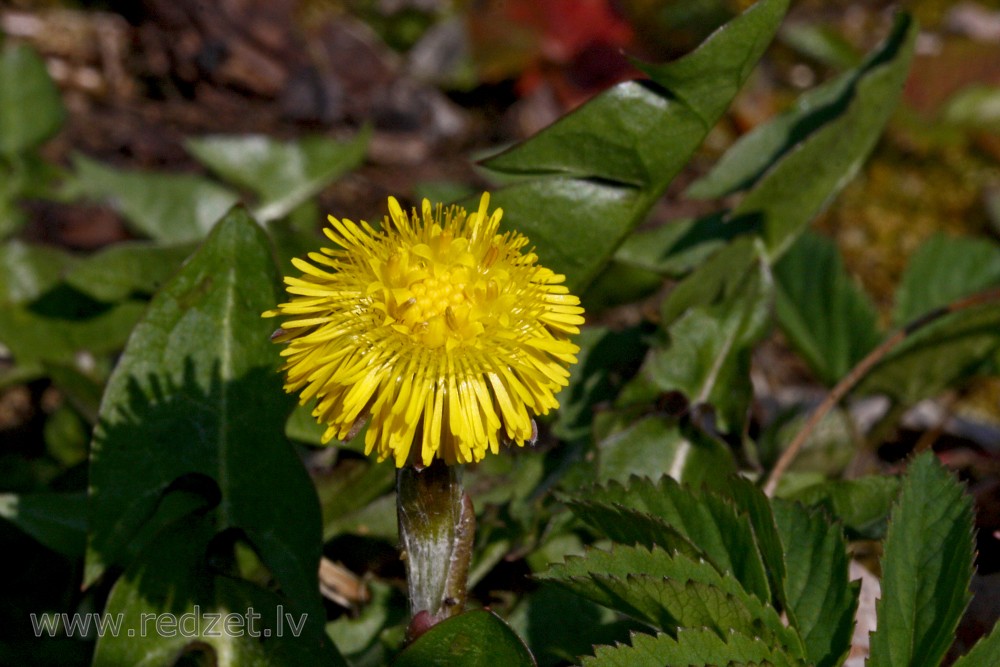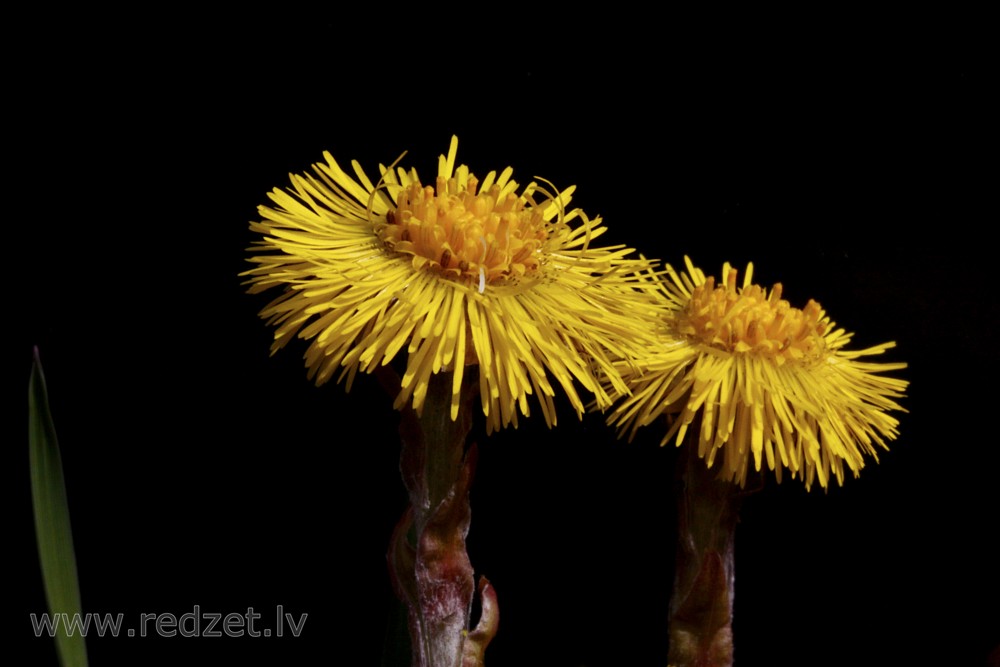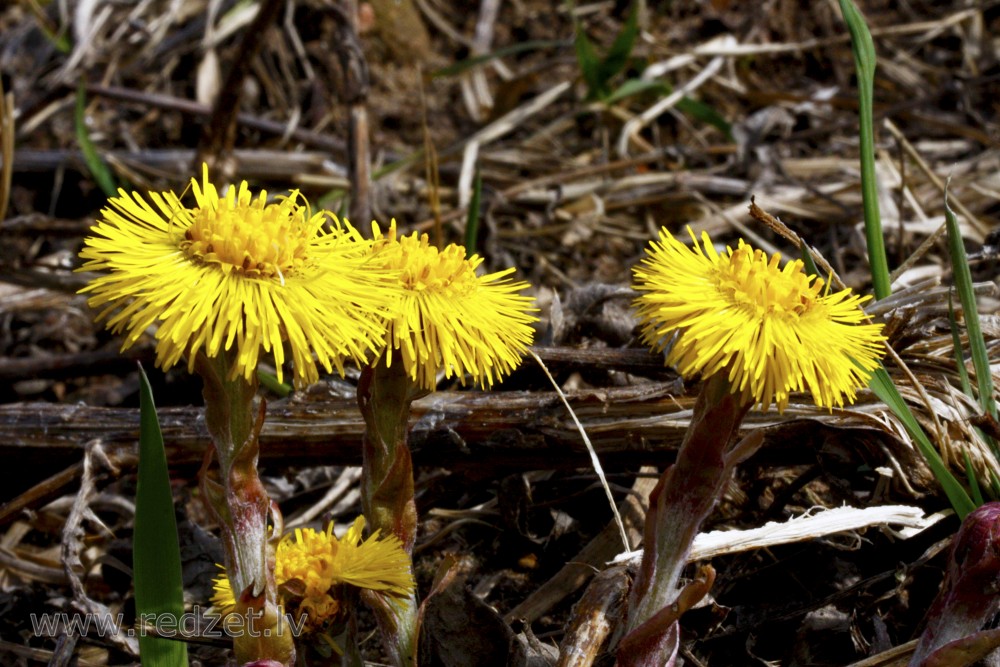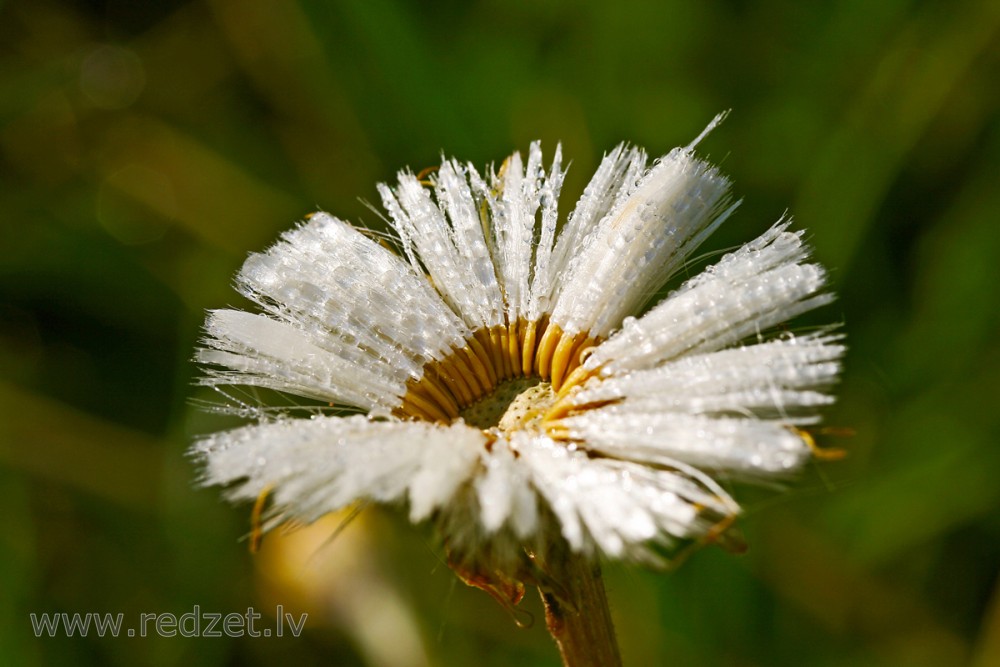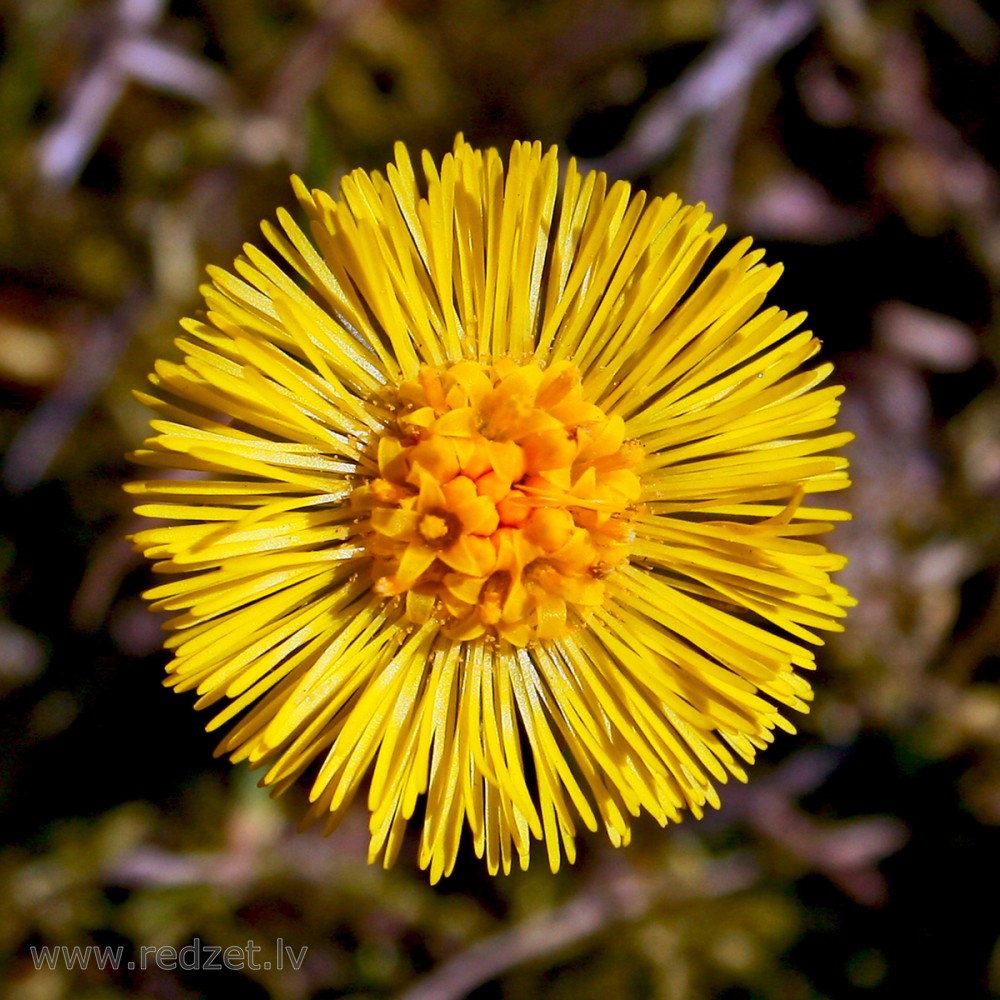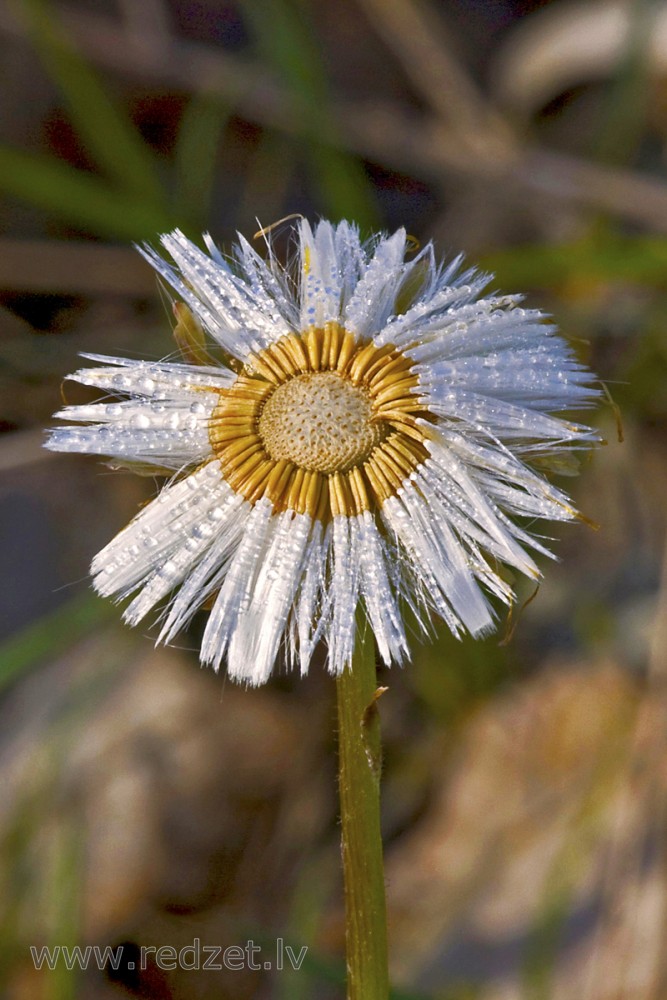Tussilago farfara (Coltsfoot)
Tussilago farfara, commonly known as coltsfoot, is a plant in the groundsel tribe in the daisy family Asteraceae, native to Europe and parts of western and central Asia. The name "tussilago" is derived from the Latin tussis, meaning cough, and ago, meaning to cast or to act on. It has had uses in traditional medicine, but the discovery of toxic pyrrolizidine alkaloids in the plant has resulted in liver health concerns.
Tussilago farfara is the only accepted species in the genus Tussilago, although more than two dozen other species have at one time or another been considered part of this group. Most of them are now regarded as members of other genera (Chaptalia, Chevreulia, Farfugium, Homogyne, Leibnitzia, Petasites, Senecio).
| Coltsfoot | |
| Kingdom: | Plantae |
| (unranked): | Angiosperms |
| (unranked): | Eudicots |
| (unranked): | Asterids |
| Order: | Asterales |
| Family: | Asteraceae |
| Subfamily: | Asteroideae |
| Tribe: | Senecioneae |
| Genus: | Tussilago |
| Species: | T. farfara |
Description
Colt's-foot is a perennial herbaceous plant that spreads by seeds and rhizomes. Tussilago is often found in colonies of dozens of plants. The flowers, which superficially resemble dandelions, bear scale-leaves on the long stems in early spring before the leaves appear. The leaves of colt's-foot appear after the flowers have set seed and wither and die in the early summer. The flower heads are of yellow florets with an outer row of bracts. The plant is typically 10–30 cm in height. The leaves have angular teeth on their margins.
Distribution
Coltsfoot is widespread across Europe, Asia, and North Africa, from Svalbard to Morocco to China and the Russian Far East. It is also a common plant in North America and South America where it has been introduced, most likely by settlers as a medicinal item. The plant is often found in waste and disturbed places and along roadsides and paths. In some areas it is considered an invasive species.
Synonym
Other common names include tash plant, ass's foot, bull's foot, coughwort (Old English), farfara, foal's foot, foalswort and horse foot. Sometimes it is confused with Petasites frigidus, or western coltsfoot.
It has been called bechion bechichie or bechie, from the Ancient Greek word for "cough". Also ungula caballina ("horse hoof"), pes pulli ("foal's foot"), and chamæleuce.
Traditional uses
Coltsfoot has been used in herbal medicine and has been consumed as a food product with some confectionery products, such as Coltsfoot Rock. Tussilago farfara leaves have been used in the traditional Austrian medicine internally (as tea or syrup) or externally (directly applied) for treatment of disorders of the respiratory tract, skin, locomotor system, viral infections, flu, colds, fever, rheumatism and gout.
Food source
Coltsfoot is used as a food plant by the larvae of some Lepidoptera species including the gothic and small angle shades.
It's visited by honeybees, providing pollen and nectar.
Toxicity
Tussilago farfara contains tumorigenic pyrrolizidine alkaloids. Senecionine and senkirkine, present in coltsfoot, have the highest mutagenetic activity of any pyrrolozidine alkaloid, tested using Drosophila melanogaster to produce a comparative genotoxicity test.] There are documented cases of coltsfoot tea causing severe liver problems in an infant, and in another case, an infant developed liver disease and died because the mother drank tea containing coltsfoot during her pregnancy. In response the German government banned the sale of coltsfoot. Clonal plants of coltsfoot free of pyrrolizidine alkaloids were then developed in Austria and Germany. This has resulted in the development of the registered variety Tussilago farfara 'Wien' which has no detectable levels of these alkaloids.
en.wikipedia.org





